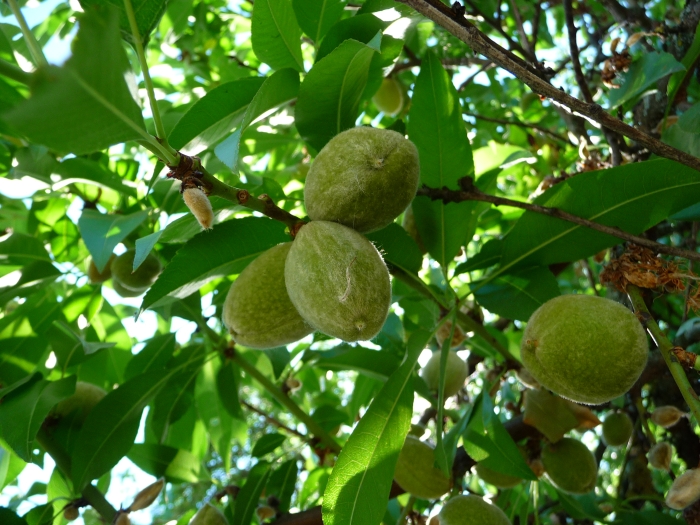Sweet Almond
(Prunus dulcis)
Sweet Almond (Prunus dulcis)
/
/

3268zauber
CC BY-SA 3.0


























































Estimated Native Range
Summary
The almond tree is valued for its nuts, which are actually seeds contained within a drupe. The nuts are encased in a hard shell that is surrounded by an outer hull. Almond trees begin to bear an economic crop in the third year after planting and reach full bearing five to six years after planting. The fruit matures in the autumn, 7–8 months after flowering. In cultivation, Sweet Almond trees are often grown in orchards and are prized for their nuts, which have numerous culinary and cosmetic uses. They require full sun, medium amounts of water, and well-drained soil to thrive. While they are relatively easy to maintain, they can be susceptible to diseases such as bacterial leaf scorch and fungal infections. Additionally, the trees are sensitive to waterlogging and require good drainage to prevent root diseases.CC BY-SA 4.0
Plant Description
- Plant Type: Tree
- Height: 10-15 feet
- Width: 10-15 feet
- Growth Rate: Rapid
- Flower Color: Pink, White
- Flowering Season: Spring
- Leaf Retention: Deciduous
Growth Requirements
- Sun: Full Sun
- Water: Medium
- Drainage: Medium
Common Uses
Bee Garden, Bird Garden, Butterfly Garden, Edible*Disclaimer: Easyscape's listed plant edibility is for informational use. Always verify the safety and proper identification of any plant before consumption., Fragrant, Rabbit Resistant, Salt Tolerant, Showy Flowers
Natural Habitat
Native to Mediterranean climate regions
Other Names
Common Names: Almendro, Almond, Bitter Almond, Knackmandel, Mandel, Mandelbaum, Bittermandelbaum, Amandier, Amandier Commun, Mandorio
Scientific Names: , Prunus dulcis, Prunus communis, Prunus amygdalus, Amygdalus dulcis, Amygdalus communis, Amygdalus communis var. amara, Prunus dulcis var. amara, Amygdalus korshinskyi, Prunus korshinskyi
GBIF Accepted Name: Prunus dulcis (Mill.) D.A.Webb